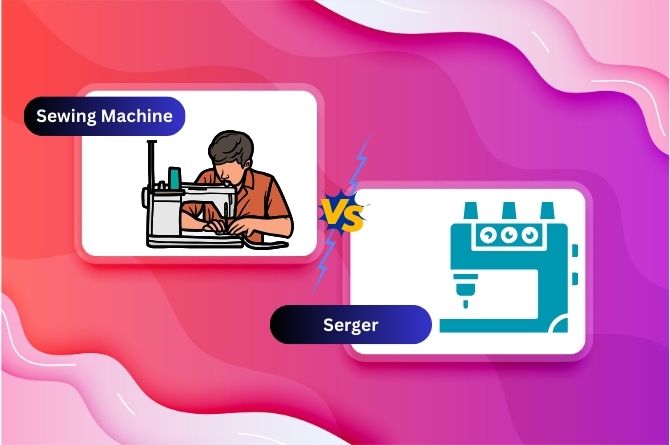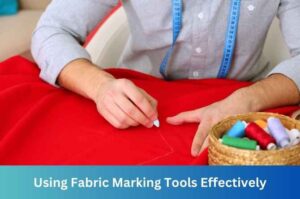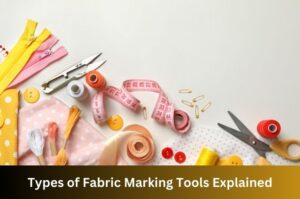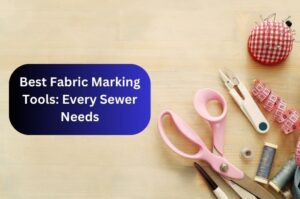When starting your journey in the world of sewing, the first major decision often revolves around the tools. A common question that arises is whether to start with a sewing machine or serger as a beginner.
Both machines are essential for different tasks, but they serve distinct purposes. For beginners, understanding the differences between the two can be the key to making an informed choice that suits their crafting needs.
In this detailed comparison, we will explore the features, benefits, and drawbacks of both the sewing machine and the serger, helping you to decide which is more suitable for your sewing journey.
Topics Analyzed
What is a Sewing Machine?

A sewing machine is a versatile tool that can be used for a wide range of sewing tasks, from basic repairs to complex garment construction. It stitches fabric together using a needle and thread, producing straight and zigzag stitches, and a variety of decorative and functional stitch patterns.
Sewing machines come in various types, such as mechanical, electronic, and computerized, each offering different levels of control and automation.
Key Features of a Sewing Machine
Versatility: Sewing machines can perform numerous tasks, including hemming, buttonholes, zippers, and even quilting.
Wide Stitch Selection: Most modern sewing machines come with various stitch options, allowing users to customize their projects.
Ease of Use: While some advanced models can be complex, basic sewing machines are generally beginner-friendly.
Straightforward Repairs: Ideal for mending and altering clothes, a sewing machine is often the first choice for simple tasks.
Advantages of a Sewing Machine
Widespread Use: Sewing machines are ideal for most general-purpose sewing projects, making them an excellent tool for beginners.
Broad Skill Development: Using a sewing machine helps beginners learn essential techniques such as measuring, cutting, and stitching.
Project Flexibility: Whether you’re creating clothing, home décor items, or crafting accessories, the sewing machine provides ample room for creativity.
Disadvantages of a Sewing Machine
Limited Finishing Capabilities: While sewing machines are great for construction, they fall short when it comes to giving your project a professional, finished look, especially on stretch fabrics.
Manual Edge Finishing: For seam finishing, you’ll need to manually fold and sew the edges to prevent fraying, which can be time-consuming.
What is a Serger?

A serger, also known as an overlocker, is a machine designed specifically to cut fabric edges while simultaneously stitching and finishing the seams.
It uses multiple threads and needles to create a strong, flexible, and clean edge, making it ideal for stretchy fabrics and garments that require a professional finish.
Key Features of a Serger
Edge Finishing: Sergers excel at creating professional-quality edges with a clean, durable finish.
Speed: Sergers are faster than regular sewing machines when it comes to finishing seams, making them highly efficient.
Multiple Threads: A typical serger uses 3-5 threads to overlock the edges, providing a strong and flexible seam.
Seam Cutting: While sewing, a serger trims the fabric’s edge, reducing fraying and creating a neat finish in one step.
Advantages of a Serger
Professional Finish: Sergers are designed to give your sewing projects a polished, factory-quality finish. The overlocking stitch prevents fraying and gives stretchy fabrics the flexibility they need to retain their shape.
Efficiency: Sergers sew faster than regular sewing machines, making them a time-saving tool when finishing seams on large projects.
Perfect for Knit Fabrics: If you’re working with knit or stretch fabrics, a serger is the best tool for the job. It creates seams that stretch with the fabric without breaking.
Disadvantages of a Serger
Limited Use: Sergers are specialized machines, primarily used for finishing edges and constructing seams on knit or woven fabrics. They are not designed for tasks like buttonholes, zippers, or topstitching.
Complexity: For beginners, sergers can be intimidating due to their threading systems and multiple needle setups.
Cost: Sergers are generally more expensive than basic sewing machines, and their maintenance can also be more complex.
Sewing Machine vs Serger: A Detailed Comparison for Beginners
Stitching Capability
The biggest difference between a sewing machine and a serger is in their stitching capabilities. While a sewing machine is capable of creating straight and zigzag stitches, a serger excels in overlocking, which provides a more finished edge.
Versatility
In terms of versatility, the sewing machine wins hands down. It can be used for a wide variety of projects beyond just finishing seams, such as quilting, embroidery, and garment construction. Meanwhile, the serger is more limited in its scope of use, focusing primarily on seam finishing and edgework.
Project Suitability
If you plan on working with lightweight woven fabrics, such as cotton, or need to complete tasks like hemming and sewing zippers, a sewing machine is your best bet. However, if your projects involve stretch fabrics, knits, or you want to add a professional touch to your garments, a serger is invaluable.
Learning Curve
The learning curve for a sewing machine is usually less steep, making it more accessible for beginners. The machine’s functions are often more intuitive, with fewer technical adjustments required. In contrast, a serger has a steeper learning curve due to its complex threading system, tension adjustments, and the precision required to operate it effectively.
Speed
If you’re looking for speed, the serger wins hands down. It sews at a much faster rate than most sewing machines, which is especially helpful when finishing long seams or when you’re working with multiple layers of fabric.
Ease of Use
For beginners, a sewing machine is generally easier to learn and use. Sewing machines are straightforward and offer the versatility needed for a wide range of projects. Sergers have a steeper learning curve due to their multiple threads and complex threading paths, but once mastered, they can significantly speed up the finishing process.
Fabric Handling
Sewing machines can handle a wide range of fabrics, from delicate silks to heavy-duty denim. Sergers excel with stretchy fabrics like knits, offering a clean, finished edge that regular sewing machines can struggle to achieve without puckering or stretching the fabric.
Cost and Budget
When it comes to price, a basic sewing machine is more affordable than a serger, especially for beginners on a budget. Quality entry-level sewing machines are widely available at a lower price point, whereas sergers tend to be more expensive. If you’re just starting out, investing in a sewing machine first may be the more practical option.
Which One Should You Choose as a Beginner?
The choice between a sewing machine and a serger depends largely on what type of projects you plan to tackle and your overall goals in sewing. If you’re just starting and want to explore a variety of projects, a sewing machine is the better initial investment.
It offers the versatility and ease of use that beginners need while still providing room to grow as you advance your skills.
However, if you’re specifically interested in garment construction and want to achieve a more professional finish, a serger can be a valuable tool in your arsenal.
Many beginners choose to start with a sewing machine and then add a serger to their toolkit once they’re more comfortable with basic sewing techniques.
Final Thoughts
Both sewing machines and sergers are fantastic tools for anyone diving into the world of sewing. For beginners, a sewing machine is often the best starting point due to its versatility, affordability, and ease of use.
Once you’ve gained confidence in your sewing skills and want to take your projects to the next level, a serger can help you achieve that professional finish.
The key is to understand what each machine offers and how it fits into your sewing goals. Ultimately, whether you choose a sewing machine, a serger, or both, you’ll be well-equipped to bring your creative projects to life. Happy sewing!




